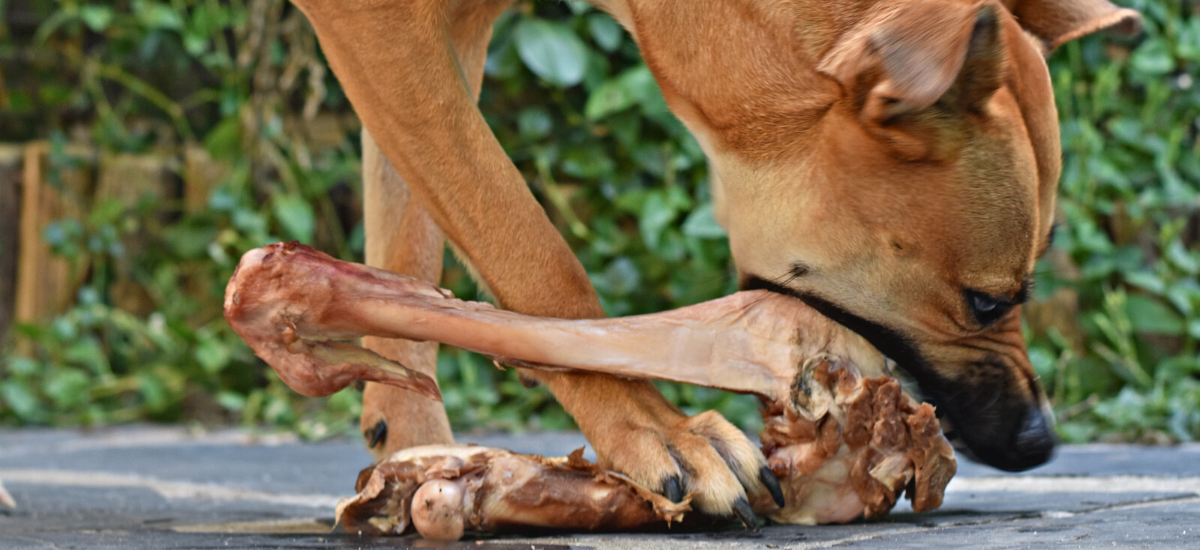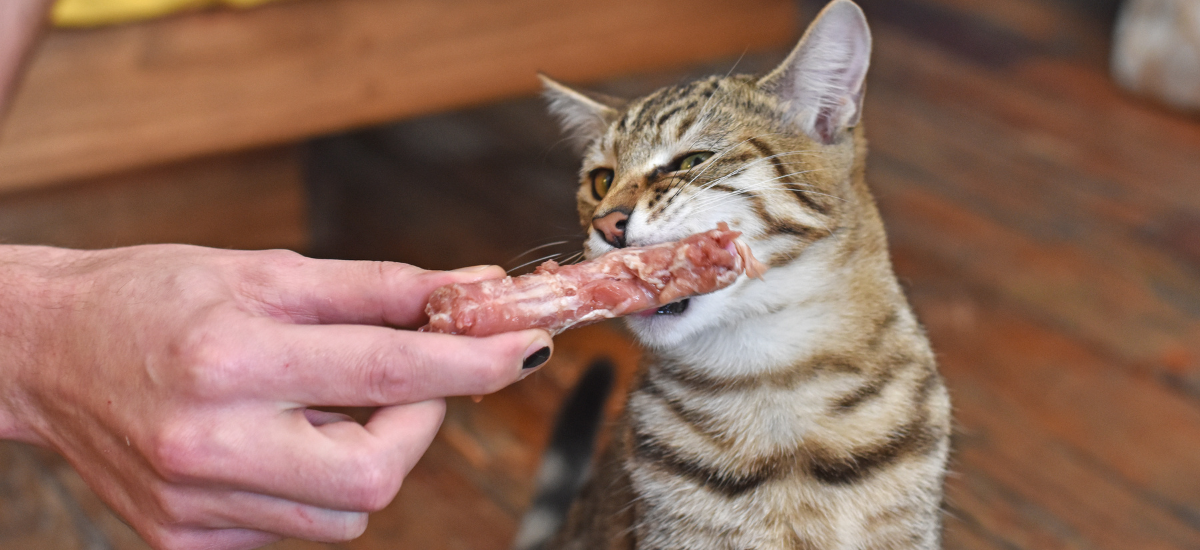
You may have heard conflicting things about whether you can safely give bones to your dogs. And have you even considered giving bones to your cats? We’re going to set the record straight for once and for all about bones! There is huge nutritional and practical benefit to giving your dogs raw recreational bones to chew on, and bone is a vital part of a raw diet for dogs and cats. A cooked bone on the other hand is a dangerous bone! Read on to learn more.
Bone Content in Your Pet’s Diet
A raw diet without bone in it will be nutritionally deficient, so this is especially important for our Prey Model / DIY raw feeders to be aware of – don’t forget the bone in the correct proportion! Too much can cause constipation and too little will cheat your pet of vital nutrition. Turkey necks like Mochi is modelling in the picture below are a great meaty-and-boney addition to a homemade raw meal. Our ready-made raw dog foods and raw cat foods all have the right amount of bone in them, so you don’t need to supplement these, though we do recommend substituting something whole and meaty for a minced meal a couple of times a week for variety and fun.

Nutritional Benefits of Raw Bones
Raw bone and bone marrow are both great sources of protein and healthy fats. Raw bones are your pet’s best source of natural, biologically available calcium, phosporus, magnesium, and other minerals. They’re also full of essential amino acids (including lysine), vital fatty acids and fat-soluble vitamins. Our fantastic bone broth offers these nutritional benefits in liquid form.
Benefits of Recreational Raw Bones for Dogs
When we say “recreational bones” we mean the type that are too big to actually eat but are great for chewing, gnawing, burying, digging up, chewing again, and leaving lying around the garden for unsuspecting humans to trip over. Mochi is modelling a mutton leg bone below, one of our most popular! Not only are recreational bones great boredom busters, keeping dogs and puppies entertained for hours, they have vital health benefits. They naturally clean your pet’s teeth, for better breath and dental health. Gnawing on and gripping whole raw bones develops your dog’s paw and jaw muscles. Chewing also releases serotonin (the happy chemical), which will calm anxious or overexcited pets (and you’d rather they chew a bone than your furniture!).

Bones for Cats?!
Yup, it may sound crazy, but cats enjoy crunching whole raw bones from time to time. Naturally the large recreational bones will be too big for them, but give your cat an opportunity to try a chicken neck and you’ll see what their little jaws are capable of!
Best Safety Practices When Feeding Bones
Please remember cooked bones are dangerous as they become brittle and can easily splinter once swallowed, causing upset or even injury to your pet’s innards. Raw bones on the other hand are soft and easily digestible by your dogs’ and cats’ highly acidic stomachs, which break down raw bone completely.
Bear in mind that small bits of bone can break off or be leftover and become a choking hazard, so don’t leave your pets gnawing unattended. Give your dogs a maximum of 2-3 recreational bones a week so you don’t cause constipation (if this does happen accidentally, a half-teaspoon of coconut oil on their food will help get things flowing again). If you give your pet a very meaty bone, or a small enough one that they consume the whole thing, then give them a smaller meal that day to keep their waistlines in check.
Check out our wide range of bones (we have many different sizes) and let us know which your pets enjoy most. Taryn's dachshund Dash is a fan of the marrow bones, which are a great option for smaller pooches!

